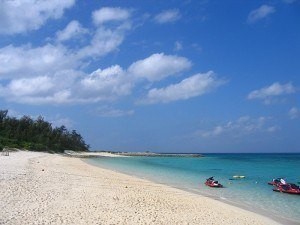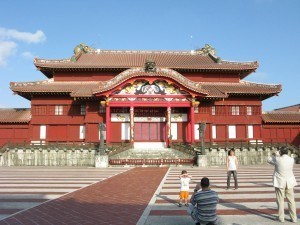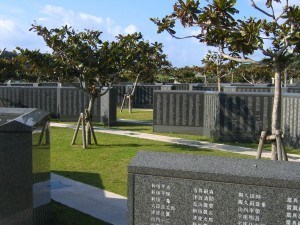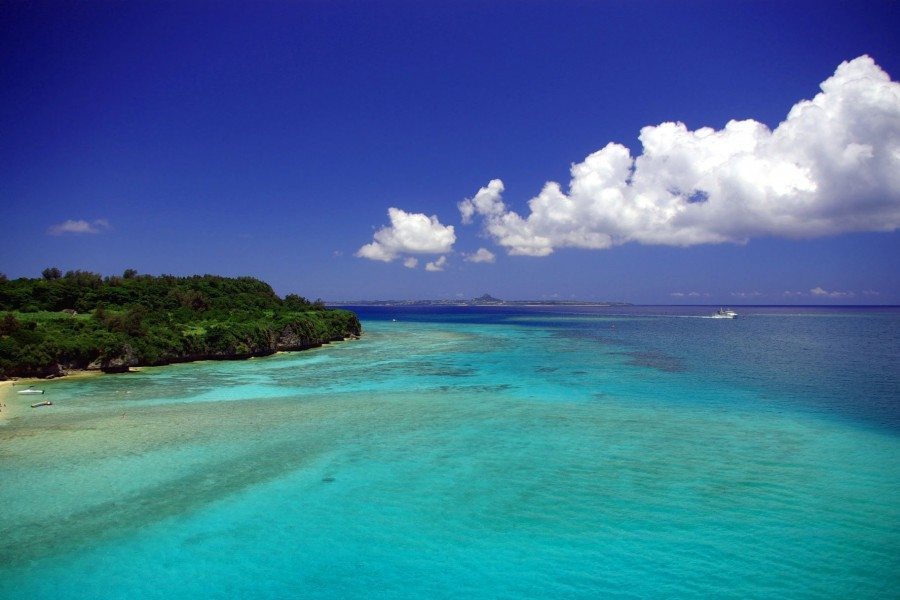Like this post? Help us by sharing it!
Okinawa, the southern island chain of Japan, is a terrific destination for both the experienced traveler looking to expand their understanding of the country, or anyone looking to experience a Japanese-style island venue.

Often called the “Hawaii of Japan,” Okinawa has a distinct history and culture from the mainland, offering an assortment of new and interesting sights and experiences. After living and working in Okinawa for a year and a half, I have compiled the following seven key sites that everyone should experience as part of their journey to understand this incredible region of Japan.
Here’s our Top 7 Things Not to Miss in Okinawa:
7. Okinawa Prefectural Museum/ Shuri Castle

The island chain now known as the prefecture Okinawa is intimately connected with Japan in modern times, but it had not always been so. Until the 1870’s, Okinawa was the independent Ryukyu Kingdom, allied culturally and politically as much with China as with Japan.
Archeological evidence suggests that while the pre-historical cultures which settled here were firmly rooted in the Jomon (Early Japanese) culture, there is as much evidence of early Taiwanese culture in the pottery record.
The languages, even until recently, would have been a distinct and mutually unintelligible variant of the Japanese language with up to two thousand years divergence from modern Japanese (called Uchinaaguchi on the largest island, Okinawa). However, most Okinawans today speak Modern Japanese.
To delve into this fascinating history, the perfect first spot to see is the Okinawa Prefectural Museum. Located in downtown Naha (the capitol of Okinawa), the museum is a straight shot along the monorail from the airport. Entrance is very affordable and the museum is English language friendly, making it an ideal location to immerse oneself in the history of Okinawa from pre-history to the modern day.
Colocated with the history museum is the Okinawan Prefectural Art museum as well—offering another level of depth to your exploration.
The natural companion destination to the museum is of course the restored Shuri castle, the former seat of the Rukyuan kings, on which much has been written. Shuri Castle is an impressive structure, and well worth the visit—especially for those interested in history.
6. Naminoue Shrine
Similar to Japan’s main islands, the traditional Shinto religion has coexisted and intermingled with Buddhism for centuries. One of the most important, and certainly the most scenic of the famous shrines of Okinawa is Nami-no-ue gu (literally “The Shrine Above the Waves”). Founded in 1367, and steeped in local lore, this incredible shrine perches on the cliffs of Naha overlooking the East China Sea where prayers were offered for fisherman and seamen.
The shrine is located only a couple of stops along the downtown monorail from the Okinawa Prefectural Museum making it very convenient to all of the other attractions and amenities in the area.

5. Battle of Okinawa Peace Park
A heavy subject, but the central role that Okinawa played in the Second World War really can’t be overlooked, as it has been the major shaping factor of the people and culture of the island in recent times. The battle of Okinawa, which raged across the island from April to June of 1945 claimed the lives of roughly 200,000 people; 100,000 of whom were local civilians—nearly a third of the population at the time.
A solemn sight, the Okinawa peace park is a tribute to all of these lives lost, and a reminder to the locals and visitors alike of the terrible cost of war, and the hope for a peaceful future rooted in a firm resolve to never repeat the patterns of history.
The park is located at the southern end of the island only a few bus stops from Naha Airport.
4. Iriomote and Ishigaki Islands
While the island of Okinawa is the largest and most important island in the broader Okinawan archipelago, a trip to the southern islands would be incomplete without visiting some of the other island destinations in the prefecture.
Two of the main attractions for mainland Japanese as well as foreign tourists are the islands of Ishigaki and Iriomote. Ishigaki is the transportation hub of the Yaeyama sub-region of the Okinawan islands. Reachable by flight from Naha Airport or by ferry, Ishigaki features a number of attractions including hotels, shops, bars and an even more pronounced sense of the true island lifestyle.
The real gem of the Yaeyama islands, however, is Iriomote—the second largest of the Okinawan islands. Much of the island makes up the Iriomote National Park, a nature reserve which is the only natural habitat of the Iriomote Mountain Cat (sometimes called Yamaneko or Yama-mayaa in the local dialect). The river tours and hiking trails here are a popular destination with mainland Japanese tourists hoping to catch a glimpse of the famous Iriomote Mountain Cat.
3. Eisa and Orion Beer Festivals (Harii/Golden Week)
Moving back to the main island of Okinawa, one of the liveliest events, like on mainland Japan, is the Golden Week (or Harii) which takes place in late spring. It is well worth experiencing the Okinawan take on this central Japanese holiday season. One of my favorite events is the Orion Beer Festival. Okinawans take particular pride in their native beer, brewed in the town of Urasoe, and this becomes evident in the huge celebration including both modern and traditional music and competitions which can last for days. Most travelers come away with the “Orion Beer Song,” with traditional Okinawan sanshin accompaniment stuck in their heads for weeks!
Admission to one of the largest festivals proper is very affordable, and the central location at Koza Sports Park in Okinawa City is a great base of operations from which to enjoy the marching bands of colorfully attired schoolchildren and professional groups parading through the streets performing the Eisa dance and playing the shimedaiko drums and sanshin. The whole of the island seems to erupt into celebration, but with somewhat less overcrowding seen in the major mainland cities during Golden Week.
2. Dragon Boat Races (Harii/Golden Week)
Another great set of events during the Okinawan Golden Week are the Dragon Boat races which take place all around the island. Dating from the 14th century, the races are taken pretty seriously and teams train for months in advance of the big day. The races are accompanied by great Okinawan beer, food and fireworks, and many of the American military bases have started fielding teams in the races as well; adding an interesting multi-cultural element to this ancient tradition.
1. Okinawan Bullfighting
While European bullfighting holds a certain amount of stigma for the violence involved, Okinawan bullfighting is an entirely different event all together. Called tougyu or ushi-zumo (literally “cow sumo”), this competition involves two bulls locking horns and attempting to push the each other out of the match ring. The local Okinawans come out in droves with the whole family, and the atmosphere can be electric as each community cheers on their local champion. And of course the grilled meat, beer, and local color create an intoxicating, authentic experience that anyone, young or old, will enjoy.
The Okinawan experience is often overlooked even by experienced Japan adventurers, but this gem of the subtropics has a lot to offer. From the solemn to the raucous, from urban to wilderness, and from ancient tradition to modern diversions, Okinawa is a fascinating region with a unique history and culture which shouldn’t be missed by any Japan enthusiast.


